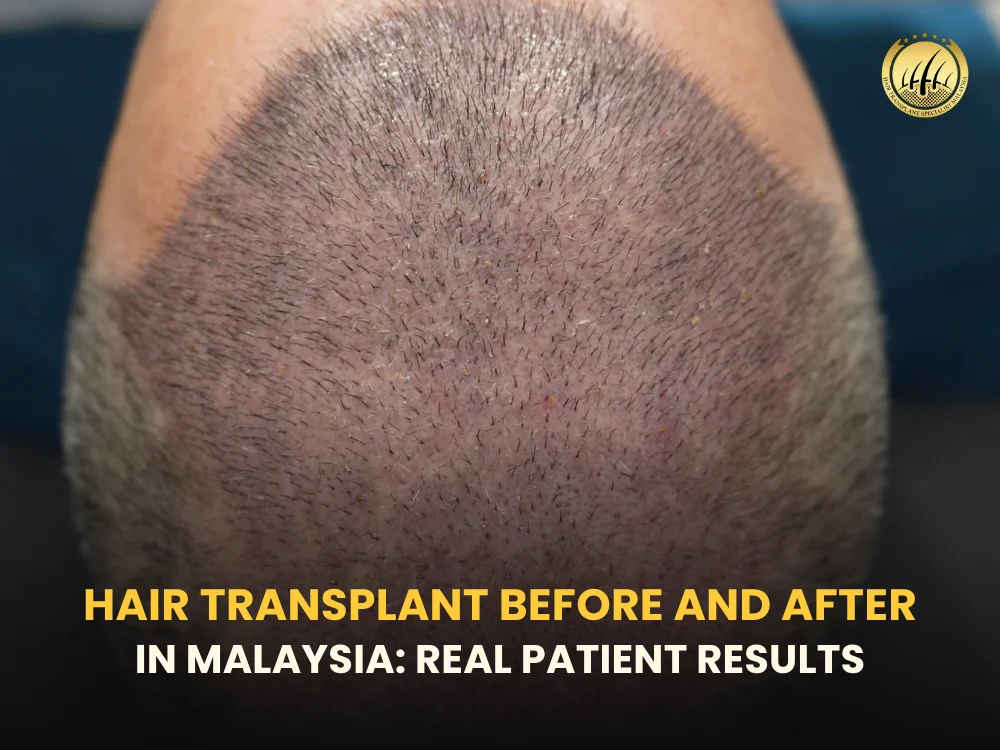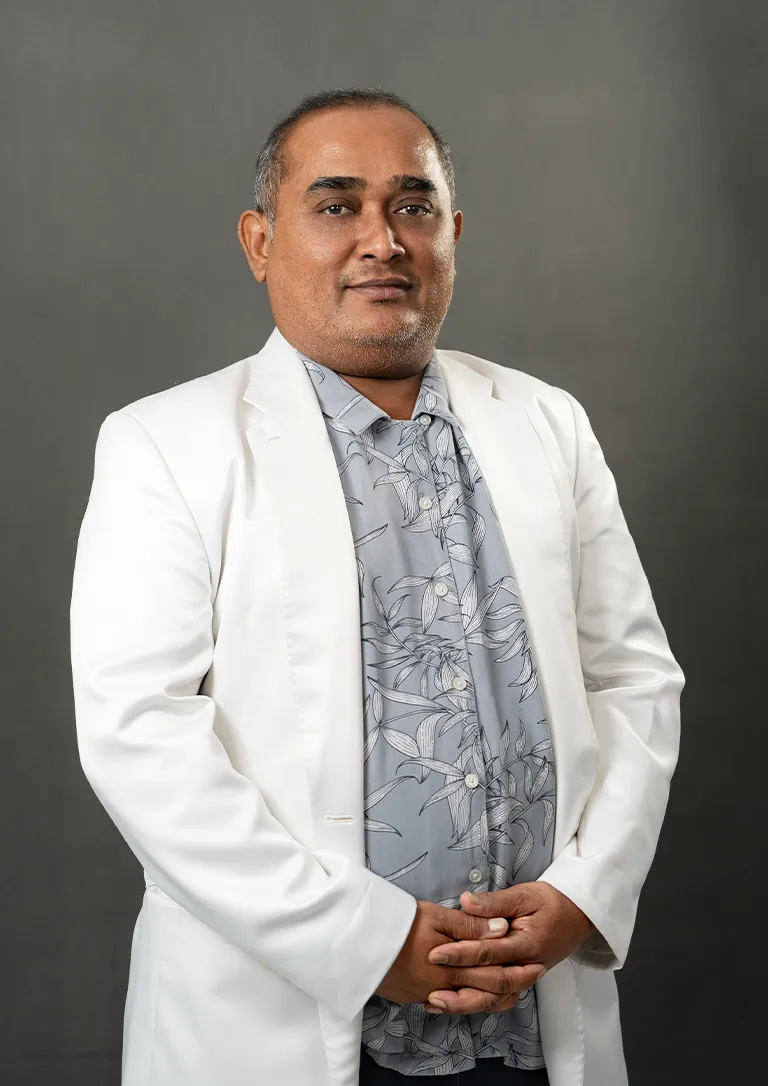If you’re exploring hair transplant before and after pictures and stories in Malaysia, you’re in the right place. The journey from thinning or receding hair to a fuller hair-line is both exciting and deeply personal. In this article, we’ll dive into true transformation stories, explore what to expect in terms of outcomes, understand the process, highlight key clinics and certifications (such as International Society of Hair Restoration Surgery (ISHRS) and American Board of Hair Restoration Surgery (ABHRS)), outline the pros and cons, and answer the most frequent questions. Whether you’re based in Kuala Lumpur, Selangor or anywhere in Malaysia, you’ll gain the insights you need to make an informed decision.
What is hair transplant before and after and why it matters
When we talk about hair transplant before and after, what we mean is the documented visual and clinical journey of an individual undergoing a hair restoration procedure — typically showing their hair condition before the transplant (thinning, receding, bald patches) and after the transplant (fuller hair-line, improved density, natural-looking results). These comparisons matter because they help set realistic expectations, highlight what modern techniques can achieve, and reassure patients that their investment can yield meaningful change.
In Malaysia, as treatments become more advanced and clinics more experienced, these before & after galleries become critical for selecting the right surgeon and setting realistic goals.
Why choose Malaysia for your hair transplant before and after transformation
Malaysia has become a sought-after destination for hair transplant before and after procedures for several reasons:
- Excellent medical infrastructure: Many clinics are equipped with modern surgical suites, digital imaging tools, and experienced support teams.
- Certified specialists: Surgeons certified by international boards like ABHRS and members of ISHRS practice here, raising standards of care.
- Cost-effective compared with some Western countries: You may get high quality treatment at comparatively lower expense.
- Supportive recovery environment: Many clinics offer post-operative care tailored to local needs (diet, climate considerations, aftercare).
- Availability of before & after portfolios: Malaysian clinics often provide real patient galleries so you can review outcomes.

Common hair transplant before and after techniques
When reviewing hair transplant before and after results, it helps to know the techniques used, as they influence the outcome, recovery time, and look of the result. Here are some of the common methods:
Follicular Unit Transplantation (FUT)
Also known as the strip method — a strip of scalp is removed from the donor area, dissected into grafts and transplanted into the bald/thinning area. Before-and-after photos typically show a linear donor scar (which may be hidden beneath existing hair).
Follicular Unit Extraction (FUE)
Individual follicular units are extracted (often via punch or micro-punch) from donor sites and inserted into recipient zones. The donor area shows tiny dot scars instead of a linear scar. Modern galleries will show minimal scarring after healing.
Typical timeline and what you’ll see in before and after photos
When reviewing hair transplant before and after, it’s helpful to know the timeline of healing and growth — so you aren’t misled by early “before/after” images taken too soon. Here’s a typical timeline:
Time Period | What you’ll see in photos |
Immediately post-op | Some redness, scabbing in donor & recipient areas |
1 – 3 months | Shedding of transplanted hairs (“shock loss”) is common |
4 – 6 months | Early growth appears; hair begins to thicken |
9 – 12 months | Significant growth seen; hairline and density more obvious |
12 – 18 months | Final results typically evident; maturity of transplanted hair |
Therefore, when looking at before & after photos from Malaysian clinics, make sure the “after” shot is taken at least 9-12 months post-transplant to reflect full results, not just an early phase.
Real patient before and after transformations in Malaysia
There are several clinics in Malaysia offering galleries of real patient results — showing hair transplant before and after images with actual Malaysian patients (ethnicities, hair types, climate-factors unique). While we won’t name specific patient identities for privacy, here are the kinds of transformations you’ll commonly see:
- Male patients in their 30s with receding temples and thinning crowns. After 3000–4000 grafts, the temples are restored, hairline rebuilt, crown filled.
- Female patients with diffuse thinning across the top; post-transplant-plus-medical therapy results show improved volume and coverage.
- Younger men who had early bald patches and opted for FUE; 12-month after photos show impressive coverage with minimal donor site visibility.
These galleries serve as realistic markers of what’s possible—but keep in mind every case is unique (factor in donor density, hair texture, scalp laxity).
How to evaluate before and after photos effectively
Looking at hair transplant before and after photos can be compelling — but you should evaluate them critically. Ask:
- Were the before and after photos taken under similar lighting, angles and hair length? Differences can exaggerate effects.
- Has the “after” photo been taken at an appropriate time (9–12 months or more) so results are mature?
- What technique was used? Is the donor area visible and healed nicely?
- Are the results natural-looking (hairline placement, directionality, density consistent)?
- Are the patient’s baseline conditions similar to yours (hair type, amount of hair loss, scalp characteristics)?
- Is the surgeon transparent about variability, risks, and realistic outcomes?
By doing this, you avoid falling for overly optimistic or misleading portfolios. Use the before-and-after gallery as a tool—not a guarantee.
What results you can reasonably expect (and what you cannot)
From reviewing multiple hair transplant before and after galleries and talking to experienced practitioners in Malaysia, here’s a realistic breakdown of expected outcomes—and tempered expectations.
What you can expect:
- Significant improvement in hairline definition and frontal region with 3000-4000 grafts for typical male pattern baldness.
- Improved density and coverage in thinning zones (though not always “thick hair like age 20”).
- Donor site healing that is well hidden, especially with FUE.
- Natural direction of hair growth when done by a skilled surgeon.
- Improved confidence, styling options and appearance after ~9-12 months of growth.
What you cannot expect:
- Instant full head of hair: transplanted hair still needs time to grow and mature.
- Same density as untouched, original hair if donor supply is limited.
- No risk of complications (infection, poor take-rate, shock loss, donor scarring) even though risks are low.
- Identical results to someone else’s before-and-after—each case is unique.
- Guarantee that hair loss will stop in non-transplanted areas—often you’ll need medical therapy alongside the transplant.
Understanding both sides helps you interpret before and after images with realistic expectations.
Factors influencing the quality of before and after results
When you’re reviewing hair transplant before and after cases and choosing a clinic in Malaysia, several key factors determine how good your result will be:
- Surgeon expertise & credentials: Ensure your surgeon is certified by ABHRS, a member of ISHRS or equivalent. These tie to higher outcome consistency.
- Donor hair quality and supply: Density, hair calibre, scalp laxity in donor region matter.
- Hair texture and colour contrast: For example, dark hair on light scalp gives better visual density than light hair on light scalp.
- Technique used (FUT vs FUE) and the skill in graft placement (angle, direction, density).
- Post-operative care and growth management: Good clinics provide aftercare protocols, medications, low-trauma procedures.
- Patient compliance: Following instructions (avoiding sun, trauma, certain medications, proper nutrition) influences healing and growth.
- Expectations and social reality: Some patients want unrealistic “movie star hair” but donor supply or biology may limit what’s possible.
Selecting a clinic in Malaysia with a strong track record of before and afters, transparency around outcomes, and patient-centred care is crucial.
Maintaining your results after the transplant
After undergoing a procedure and achieving your hair transplant before and after transformation, maintenance matters. Here’s what to consider:
- Medical therapy: Medications like finasteride or minoxidil (as recommended) may slow further hair loss in non-transplanted zones.
- Proper hair care: Gentle shampoos, avoiding harsh treatments, limiting heat styling or chemicals.
- Healthy lifestyle: Good nutrition, stress-management, keeping scalp healthy enhances growth.
- Follow-up check-ups: The clinic should monitor your result, graft take-rate, and any needs for further intervention.
- Sun protection & scalp care: Since donor and recipient sites heal, sunscreen and gentle care are beneficial.
- Realistic mindset: Some natural thinning may still occur, but the transplanted hair is typically permanent and stable.
By combining your procedure with good after-care, your before and after will have lasting meaning.
Conclusion
The journey of a hair transplant before and after is both exciting and meaningful. By studying real hair transplant before and after results in Malaysia, asking the right questions, choosing a certified surgeon, and following through with care, you set the stage for a transformation that lasts.
If you’re ready to move forward with your consultation, consider working with a top-tier hair transplant clinic in Malaysia with over 25 years of expertise, ABHRS/ISHRS certified surgeons, and a robust before & after gallery. Don’t leave your results to chance—choose excellence, choose outcome, choose the confidence that comes from visible transformation.
👉 For more information or to book your consultation at Hair Transplant Malaysia Clinic, reach out today and review real patient before & after results in person.
Frequently Asked Questions
1. How soon will I see noticeable change after a hair transplant?
Most patients begin to see visible growth around month 4-6, with more mature results around month 9-12. Early “before and after” pictures taken sooner might not reflect final outcome.
2. Will my scalp show scars in the before and after photo?
It depends on the technique. With FUE the donor site typically shows tiny dot scarring; with FUT a linear scar may be present. Good before and after galleries will show healed donor areas.
3. Is the “after” result permanent?
The transplanted hair is typically permanent if done correctly, but you may still experience further natural hair loss in non-transplanted areas, which could affect the overall look in the long-term.
4. How many grafts will I need to replicate the before and after I saw online?
Graft numbers vary by case—hair loss pattern, donor hair quality, and target density. A qualified surgeon will assess your donor supply and realistic expectations during consultation.
5. Does hair texture (Asian vs Caucasian) affect before and after outcomes?
Yes—Hair texture, colour contrast and scalp characteristics influence visual density and outcome. Before and after images of patients with similar hair type as yours (e.g., Asian) are especially helpful.
6. What happens if I’m unhappy with my before and after result?
Good clinics will discuss revision options ahead of time. Make sure your surgeon explains their policy for follow-up, adjustments or further sessions if needed.
7. Is after-care important in achieving the “after” photo look?
Absolutely. Proper after-care—avoiding trauma, following medication protocols, protecting the scalp—can influence graft survival and final density.
8. Are the “before and after” images always reliable?
Not always. Variables like lighting, hair length, angle, timing can alter appearances. Always compare similar conditions (lighting, hair length, stage of growth) and ask for full-case documentation.
9. Will my hairstyle options increase after the transplant?
Yes—once growth is sufficient, you have more flexibility in styling, parting hair in different directions, reducing visibility of previous thinning zones. Good before and after shots often show improved styling freedom.
10. How long do I need to wait before doing activities like swimming or gym?
Your surgeon will advise, but typically after the first 2-4 weeks you can resume light activities. High-impact workouts, sun exposure, or swimming may be delayed until the grafts are stable. Always follow your clinic’s guidelines.

